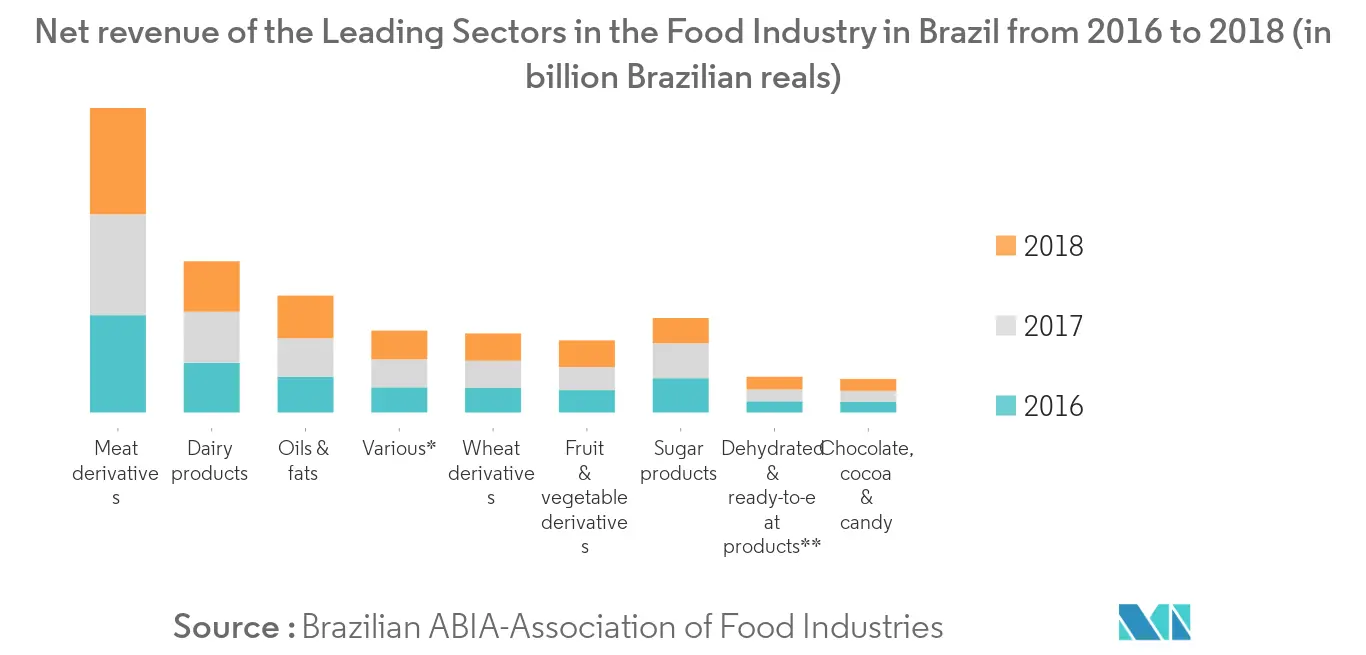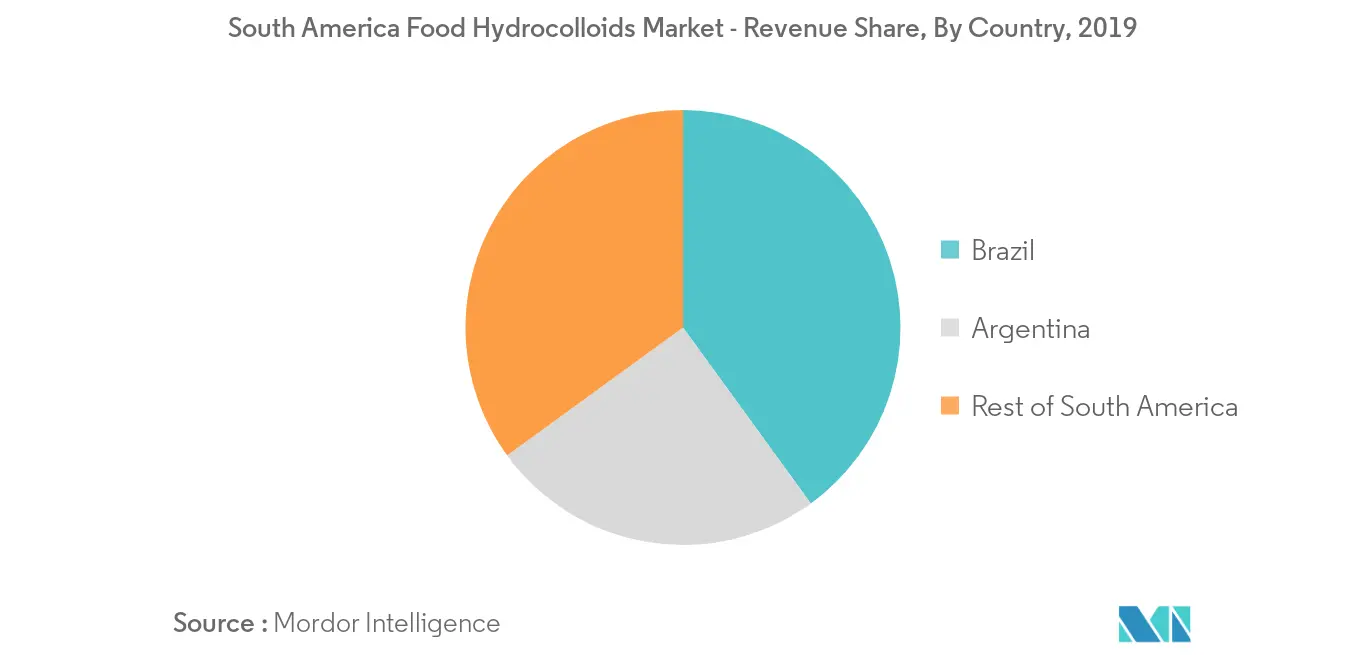Market Trends of South America Food Hydrocolloids Industry
This section covers the major market trends shaping the South America Food Hydrocolloids Market according to our research experts:
Increasing Demand for Processed Foods in the Region
Commercially, the most attractive markets for ultra-processed food and drinks are no longer the fully-industrialized high-income countries; they are the middle- and low-income countries, including the ones in South America. The countries in South America, like Brazil and Argentina, witnessed rapid growth in the demand for processed foods, over the past few years. Ultra-processed foods are found to have a faster growth rate in the region. The nutritional profile of the fraction of ultra-processed food consumption showed higher energy density, higher overall fat content, higher saturated and trans fats, higher levels of free sugar, less fiber, and lower protein, sodium, and potassium, when compared to the fraction of consumption of natural or minimally processed foods have propelled the demand. Thus, the increasing demand for processed foods in the region is expected to boost the sales of the market.

Brazil Holds a Prominent Share in the Market
The demand for natural food products is increasing, among the health-conscious consumers. This has resulted in the tremendous growth of the hydrocolloids market. Hydrocolloids function as binding agents, stabilizers, emulsifiers, thickeners, and gelling agents. The market is largely driven by increased R&D and innovations in hydrocolloids. The consumers' preference for natural ingredients and the varied applications of hydrocolloids in the food and beverage industry are some of the reasons for the upsurge in the demand. The changing consumer demographics, in terms of lifestyle changes and the increasing working population, are resulting in the demand for convenience and processed foods, especially in the emerging countries. This is seen as an opportunity for the manufacturers to adopt hydrocolloids in their manufacturing processes.


